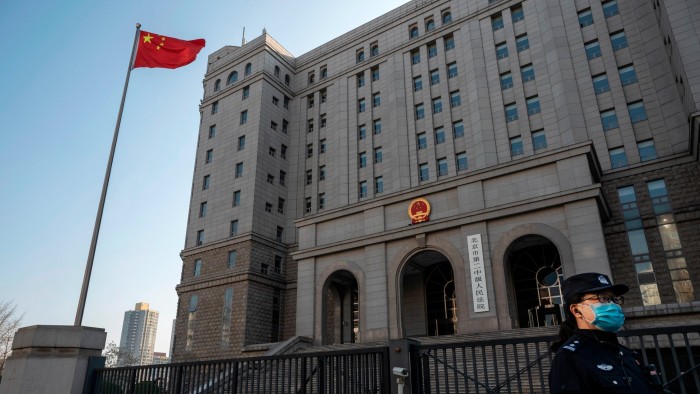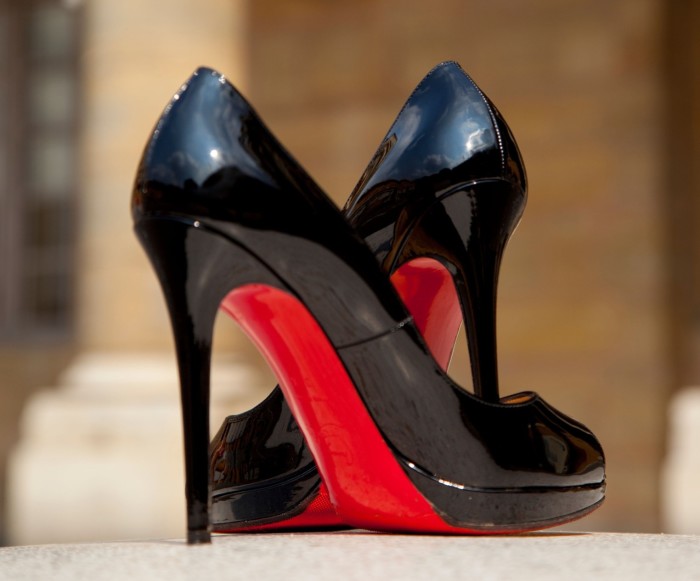Chinese law firm leaders ambitious for growth

Roula Khalaf, Editor of the FT, selects her favourite stories in this weekly newsletter.
Veteran lawyers such as Warren Hua and Wang Junfeng have had front-row seats in the transformation of the Chinese legal industry over the past three decades.
When China emerged from the chaos of years under Mao Zedong to reform its legal system in the late 1970s, the country had a few thousand lawyers. Judges often had no academic background and civil litigation barely existed.
Today, the number of lawyers is approaching 700,000 — nearly five times the UK. Among the 50 largest law firms in the Asia-Pacific region, 15 are either local Chinese groups or international firms with most of their lawyers in China. Yingke, estimated to be the world’s biggest law firm by headcount, boasts around 12,000 lawyers alone.
“Twenty years ago, the major competitors of the international firms were the other international firms,” Hua says.
“Now, the situation has completely changed . . . all of these top-tier Chinese law firms have the capacity and capability.”
Hua advanced through one of the country’s five major state-run law schools to work and study in London and Hong Kong before returning to China. He then rose through the ranks of Gide Loyrette Nouel’s Beijing office before joining rival firm JunHe in 2012.
Most firms have ballooned under a traditional partnership model where partners essentially own their respective teams and share common costs.
In contrast, JunHe operates more like big western firms, says Hua. But, in common with its peers, it is racing to adapt to the increasing complexity of Chinese law.
“When it comes to regulatory compliance, it is covering a much wider range of practice areas and sometimes the line between such practice areas is not crystal clear,” Hua notes.
To break down divisions between legal practice departments, JunHe is now expanding its use of so-called “virtual mega groups”. The firm’s regulatory compliance mega group, established in 2021, integrates more than 10 business lines so that “associates with specialities scattered in different departments can be mobilised in a more co-ordinated manner”.
The firm has also identified priorities in other areas, he adds. These range from identifying and avoiding conflicts of interest, modernising information-sharing systems, and developing an online platform for internal training.
The career of Wang Junfeng, global chair of King & Wood Mallesons, has also closely tracked the exponential growth of China’s legal profession.
In 1993, Wang — who had studied in the US — was allowed to form King & Wood, one of China’s first private law firm partnerships. At that time, China’s reforming leader Deng Xiaoping was still in power and the country was a decade away from accession to the World Trade Organization.
Over the past three decades, Wang observes, the sector has been driven by not only rapid economic growth but also by “increasing sophistication”.
During this time, the country’s annual per capita household income has rocketed from $366 to more than $10,000. And lawyers’ pay has surged astronomically, too. Top domestic firms now boast profitability per partner of just below $1mn and, over the past 18 months, they have increasingly poached Chinese partners from leading international firms.
These days, however, the Chinese economy is struggling with slower growth while rising geopolitical tensions between Beijing and western governments are complicating the outlook for the businesses that had thrived from global economic integration.
Although the top-tier Chinese firms are still adding headcount, some international firms have scaled back operations in Beijing and Shanghai in reaction to a decline in foreign direct investment flows, in and out of China.
At the same time, China’s courts have struggled to shake off associations with political show trials from periods of Communist party purges, criminal conviction rates of 99 per cent, and regular imposition of the death penalty.
Randall Peerenboom, author of China’s Long March toward Rule of Law and professor at the University of California, Los Angeles, argues that the subsequent improvements in China’s legal system have been “remarkable . . . since essentially beginning from scratch in 1978”.
But concerns persist. On April 10, two of China’s most prominent human rights lawyers, Xu Zhiyong and Ding Jiaxi, were given jail terms of 14 and 12 years respectively, on allegations of “subversion of state power”. Human Rights Watch, a US-based group, slammed the sentences and said their charges were “farcical” and their cases “riddled with procedural problems and allegations of mistreatment”.
The relationship between the ruling Chinese Communist party and the country’s local law firms also remains opaque.
The head of one top law firm, who asked not to be named, says local firms do have internal CCP committees though, in his own, the party is “not involved in any business-related matters”.
“I believe some law firms may be more active on party-related matters; they may get their party committee to be involved in the daily management of the firm,” he says.
Against that backdrop, a deep-seated perception of local bias in commercial law has meant multinationals aim to settle disputes long before they reach the courtroom.
For decades, few foreign investors would pursue an intellectual property dispute or chase debt through courts on the mainland.
However, KWM’s Wang argues that the tide has turned. He points to an array of intellectual property cases in recent years in which foreign groups have triumphed in the local courts.
One example is the victory of French shoemaker Christian Louboutin over manufacturer Guangdong Wanlima Industrial in the Beijing Intellectual Property Court last September. The luxury brand won judicial protection for its iconic red sole design — as well as hundreds of thousands of dollars in damages and legal fees.

Similarly, in late 2021, the IP courts ruled in favour of German industrial giant Siemens against Suzhou Inovance Technology over patent infringement for technology used in controlling speed in an electric motor. The case was also noteworthy as KWM lawyers convinced the courts to rule using only written evidence, a change from demanding physical samples of products — a problematic requirement in the case of large industrial equipment.
Wang acknowledges headwinds but sees scant chance of a slowdown hitting China’s commercial lawyers. Work on enforcing intellectual property rights, along with broader demand for commercial dispute resolution, remain key growth drivers, and he sees co-operation between lawyers across national borders remaining essential.
Looking ahead, Chinese president Xi Jinping’s overhaul of the finance sector, to encourage its growth, is expected to drive more new business for the country’s lawyers.
“The market will continue to grow,” says Wang. “Although we can see some conflicts and difficulties between the east and west, China and the US . . . the world needs globalisation.”

Comments